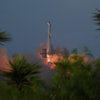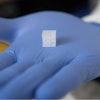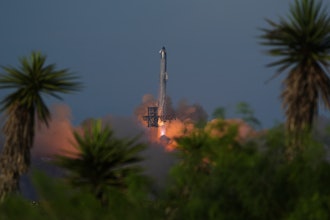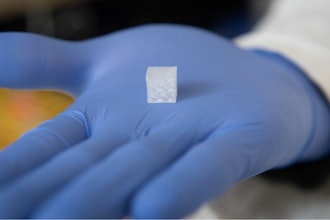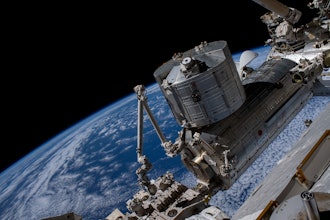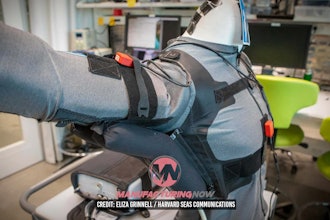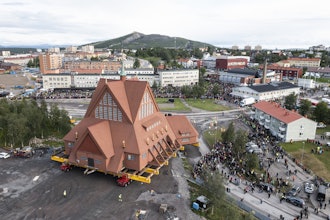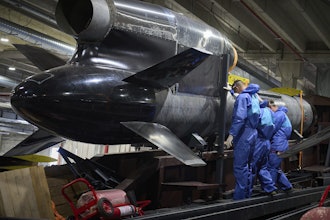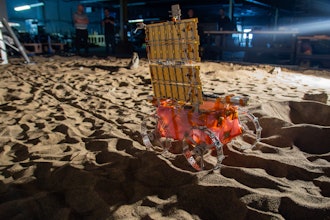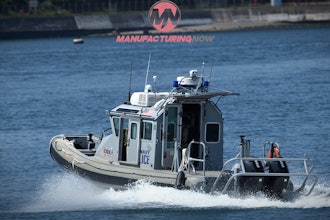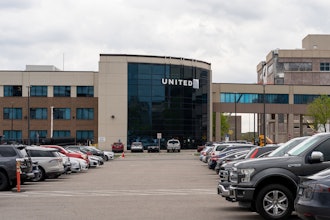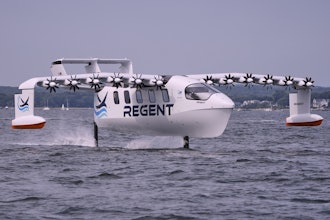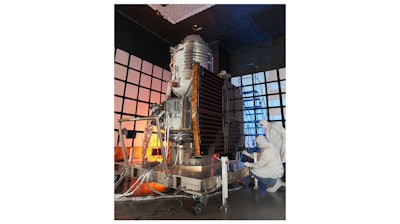
Engineers on NASA's NEOWISE (Near-Earth Object Wide-field Infrared Survey Explorer) mission commanded the spacecraft to turn its transmitter off for the last time Thursday. This concludes more than 10 years of its planetary defense mission to search for asteroids and comets, including those that could pose a threat to Earth.
The final command was sent from the Earth Orbiting Missions Operation Center at NASA's Jet Propulsion Laboratory in Southern California, with mission members past and present in attendance alongside officials from the agency's headquarters in Washington. NASA's Tracking and Data Relay Satellite System then relayed the signal to NEOWISE, decommissioning the spacecraft. As NASA previously shared, the spacecraft's science survey ended on July 31, and all remaining science data was downlinked from the spacecraft.
NASA ended the mission because NEOWISE will soon drop too low in its orbit around Earth to provide usable science data. An uptick in solar activity is heating the upper atmosphere, causing it to expand and create drag on the spacecraft, which does not have a propulsion system to keep it in orbit. Now decommissioned, NEOWISE is expected to safely burn up in our planet's atmosphere in late 2024.
During its operational lifetime, the infrared survey telescope exceeded scientific objectives for not one but two missions, starting with the WISE (Wide-field Infrared Survey Explorer) mission. Managed by JPL, WISE launched in December 2009 with a seven-month mission to scan the entire infrared sky. By July 2010, WISE had accomplished this with far greater sensitivity than previous surveys. A few months later, the telescope ran out of the coolant that kept heat produced by the spacecraft from interfering with its infrared observations. (Invisible to the human eye, infrared wavelengths are associated with heat.)
NASA extended the mission under the name NEOWISE until February 2011 to complete a survey of the main belt asteroids, at which point the spacecraft was put into hibernation. Analysis of this data showed that although the lack of coolant meant the space telescope could no longer observe the faintest infrared objects in the universe, it could still make precise observations of asteroids and comets that generate a strong infrared signal from being heated by the Sun as they travel past our planet.
NASA brought the telescope out of hibernation in 2013 under the Near-Earth Object Observations Program, a precursor for the agency's Planetary Defense Coordination Office, to continue the NEOWISE survey of asteroids and comets in the pursuit of planetary defense.
By repeatedly observing the sky from low Earth orbit, NEOWISE created all-sky maps featuring 1.45 million infrared measurements of more than 44,000 solar system objects. Of the 3,000-plus near-Earth objects it detected, 215 were first spotted by NEOWISE. The mission also discovered 25 new comets, including the famed comet C/2020 F3 NEOWISE that streaked across the night sky in the summer of 2020.
In addition to leaving behind a trove of science data, the spacecraft has helped inform the development of NASA's first infrared space telescope purpose-built for detecting near-Earth objects: NEO Surveyor.
Also managed by JPL, NEO Surveyor will seek out some of the hardest-to-find near-Earth objects, such as dark asteroids and comets that don't reflect much visible light, as well as objects that approach Earth from the direction of the Sun. The next-generation infrared space telescope will greatly enhance the capabilities of the international planetary defense community, which includes NASA-funded ground surveys. Construction of NEO Surveyor is already well under way, with a launch date set for no earlier than 2027.
More Mission Information
The NEOWISE and NEO Surveyor missions support the objectives of NASA's Planetary Defense Coordination Office at the agency's headquarters. The NASA Authorization Act of 2005 directed NASA to discover and characterize at least 90% of the near-Earth objects more than 460 feet (140 meters) across that come within 30 million miles (48 million kilometers) of our planet's orbit. Objects of this size can cause significant regional damage, or worse, should they impact the Earth.
NASA JPL manages and operates the NEOWISE mission for the agency's Planetary Defense Coordination Office within the Science Mission Directorate. The Space Dynamics Laboratory in Logan, Utah, built the science instrument. BAE Systems of Boulder, Colorado, built the spacecraft. Science data processing, archiving, and distribution is done at IPAC at Caltech in Pasadena, California. Caltech manages JPL for NASA.


